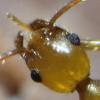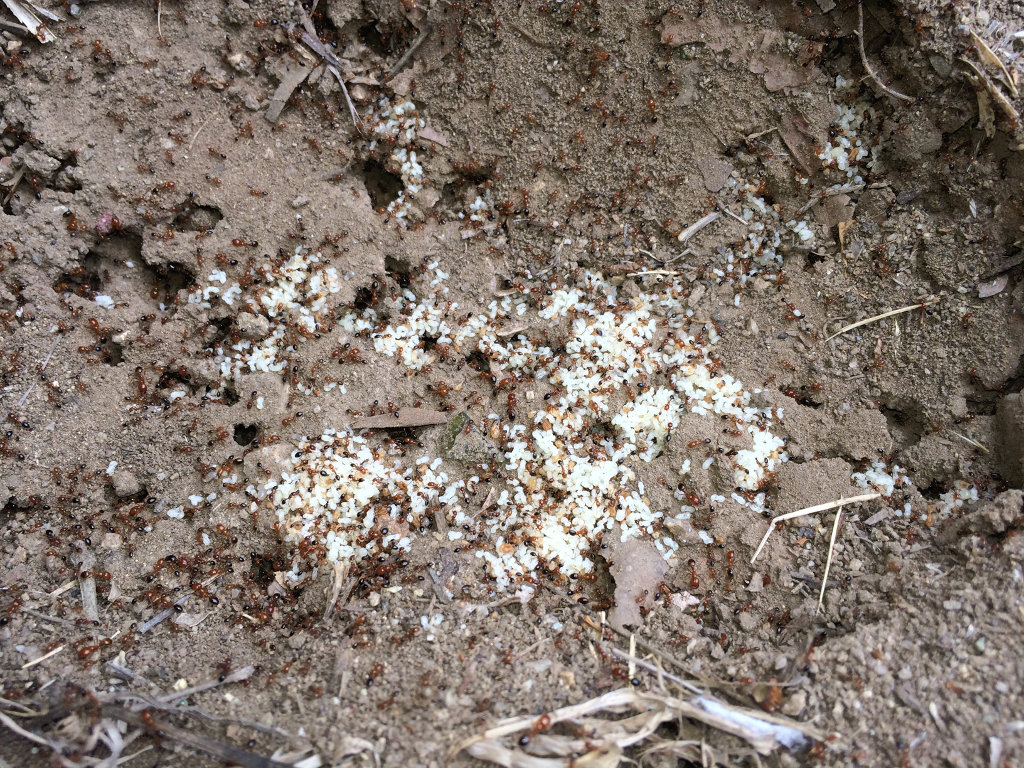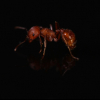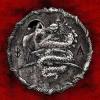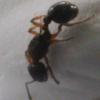1. Location of collection: Simi Valley, Ca
2. Date of collection: 5-13
3. Habitat of collection: open field, rocky dirt
4. Length (from head to gaster): approx 4-5mm
5. Color, hue, pattern and texture: red head and thorax, black gaster
6. Distinguishing characteristics: Fast, very aggressive. Shallow nest


